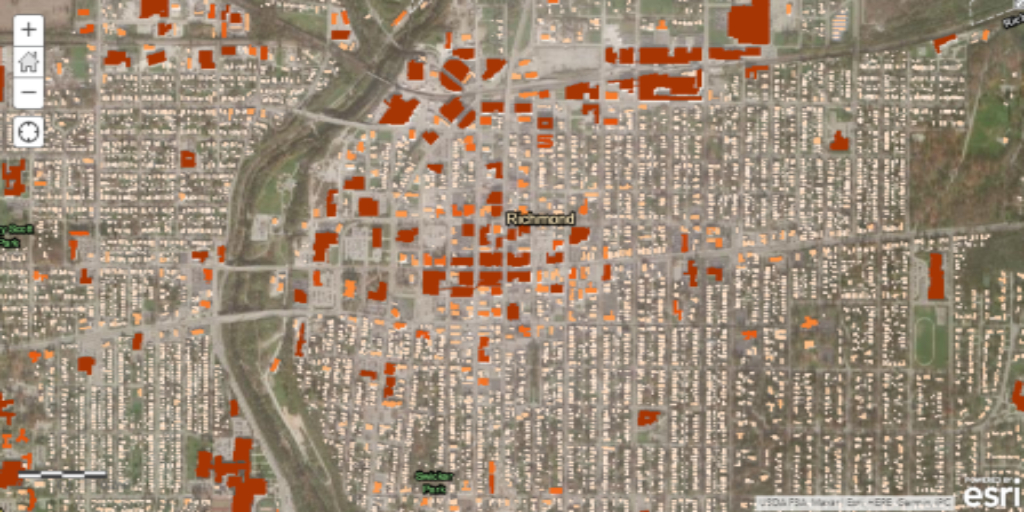The creation of Richmond’s solar map was initially based on an ArcGIS lesson, which teaches how to determine the amount of solar radiation a neighborhood in Washington, D.C. receives throughout the year. After completing the online lesson, the GIS coordinator reproduced the same project, on a larger scale, tailored to the City of Richmond.
To produce Richmond’s map, staff with GIS experience collected the yearly solar radiation, LiDAR hillshade, and building footprints from IndianaMap, a website that provides free statewide GIS data.
Funding
The City of Richmond did not spend any funding on developing the solar map other than staff time. However, using ArcGIS Pro requires purchasing a license to use their GIS application, which Richmond already had. Prices vary, depending on the type of capabilities and applications needed, between $700 and $3,800 for businesses and $100 for individuals.



